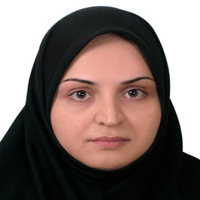Reactive yellow 81 removal using photocatalytic cascade disk reactor coated by ZnO nanoparticles
Author(s):
Abstract:
The use of different synthetic dyes in textile industries has increased in recent decay, resulting in the release of dye-containing industrial effluents into natural aquatic ecosystem. Since most of dyes are usually very recalcitrant to microbial degradation, therefore dye removal from effluent is a main concern in many studies. Different process was used for the treatment of dye effluent. In the last few years, studies were focused on advanced oxidation process (AOPs) methods such as UV-ZnO, UV-H2O2, UV-O3 and UV-TiO2. Photocatalytic process such as UV-ZnO is an efficient method that treats non-degradable wastewater by active radicals. The photocatalysis needs a photo-reactor that contacts reactant, products and light. In recent years, different types of photo-reactors have been used for wastewater treatment. In some reactors, nano-photocatalysts are utilized in slurry form, and the other particles are coated on bed. In Photocatalytic reactors with fixed bed, nano-photocatalysts are immobilized on bed and do not need the separation unit, but the main disadvantage of this photo-reactors is the low mass transfer rate between wastewater and nano-photocatalysts. Consequently, Different optimal photo-reactors were developed for increasing mass transfer rate. In this study, a novel photocatalytic cascade disc reactor coated with ZnO nano-photocatalysts was applied and in order to increase mass transfer rate artificial roughness were created on the surface of disks. Applying artificial roughness changes mass transfer rate by providing vertical mixing, creating secondary currents and increasing the Reynolds number. This photo-reactor has a number of advantages that include eliminating the need for catalyst separation units as the catalyst is immobilized, creating the flow mixing by non-mechanical method, increasing the transport of oxygen from the gas phase to the photocatalyst surface by providing the flow cascade pattern. The photo-reactor was used in order to remove Reactive Yellow 81 (RY81) dye from textile industry effluent, by means of UV-ZnO process. RY81 is a reactive dye composed of 10 Benzene rings and two N=N azo bonds. The effect of different operational parameters such as initial Concentration of dye, pH, Catalyst surface loading and flow rate in removal efficiency was investigated, and the optimal value of those parameters were 50 mg/L, 8, 40 gr/m2 and 80 cc/s, respectively. A rate equation for the removal of RY81 was obtained by mathematical kinetic modeling. The Langmuir-Hinshelwood kinetic model is one of the most common kinetic models that are used for studying the kinetics of heterogeneous photo-catalysis. The results of reaction kinetic modeling indicate the conformity of removal kinetics with Langmuir-Hinshelwood model, and the constants kL-H and Kads were obtained 7.17 mg L-1 hr-1, 0.122 mg-1 L, respectively.
One way of inserting various operational parameters to a rate equation is regression analysis. Therefore, in this study, nonlinear regression model was developed for prediction pseudo- first order rate constant as a function of initial concentration of dye, pH, catalyst surface loading and flow rate. This equation could properly predict (R2=0.95) the removal rate constant of RY81 removal in the photocatalytic cascade disk reactor under different operational conditions and a good consistency was observed between the calculated results and experimental findings.
One way of inserting various operational parameters to a rate equation is regression analysis. Therefore, in this study, nonlinear regression model was developed for prediction pseudo- first order rate constant as a function of initial concentration of dye, pH, catalyst surface loading and flow rate. This equation could properly predict (R2=0.95) the removal rate constant of RY81 removal in the photocatalytic cascade disk reactor under different operational conditions and a good consistency was observed between the calculated results and experimental findings.
Keywords:
Language:
Persian
Published:
Quranic Knowledge Research, Volume:17 Issue: 2, 2017
Pages:
11 to 20
magiran.com/p1716222
دانلود و مطالعه متن این مقاله با یکی از روشهای زیر امکان پذیر است:
اشتراک شخصی
با عضویت و پرداخت آنلاین حق اشتراک یکساله به مبلغ 1,390,000ريال میتوانید 70 عنوان مطلب دانلود کنید!
اشتراک سازمانی
به کتابخانه دانشگاه یا محل کار خود پیشنهاد کنید تا اشتراک سازمانی این پایگاه را برای دسترسی نامحدود همه کاربران به متن مطالب تهیه نمایند!
توجه!
- حق عضویت دریافتی صرف حمایت از نشریات عضو و نگهداری، تکمیل و توسعه مگیران میشود.
- پرداخت حق اشتراک و دانلود مقالات اجازه بازنشر آن در سایر رسانههای چاپی و دیجیتال را به کاربر نمیدهد.
In order to view content subscription is required
Personal subscription
Subscribe magiran.com for 70 € euros via PayPal and download 70 articles during a year.
Organization subscription
Please contact us to subscribe your university or library for unlimited access!


